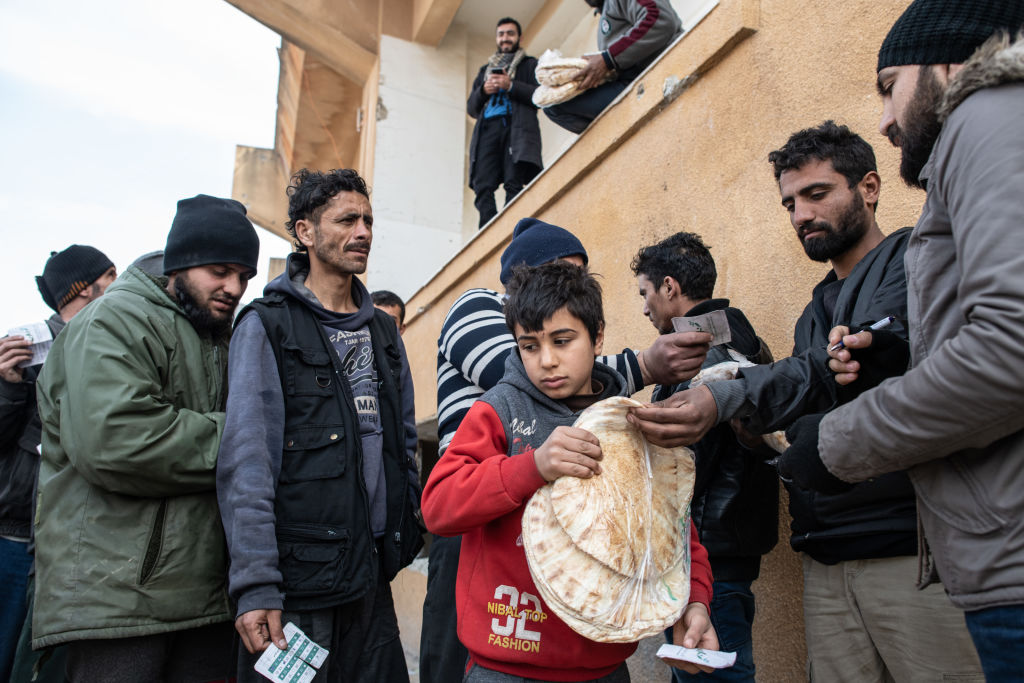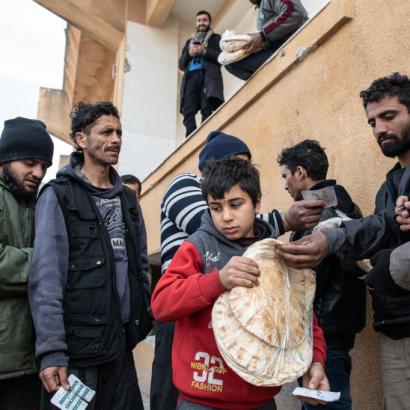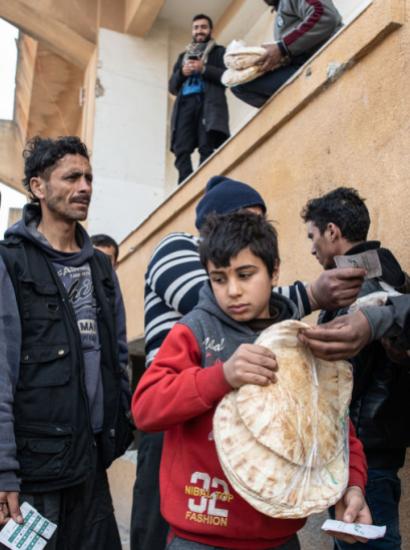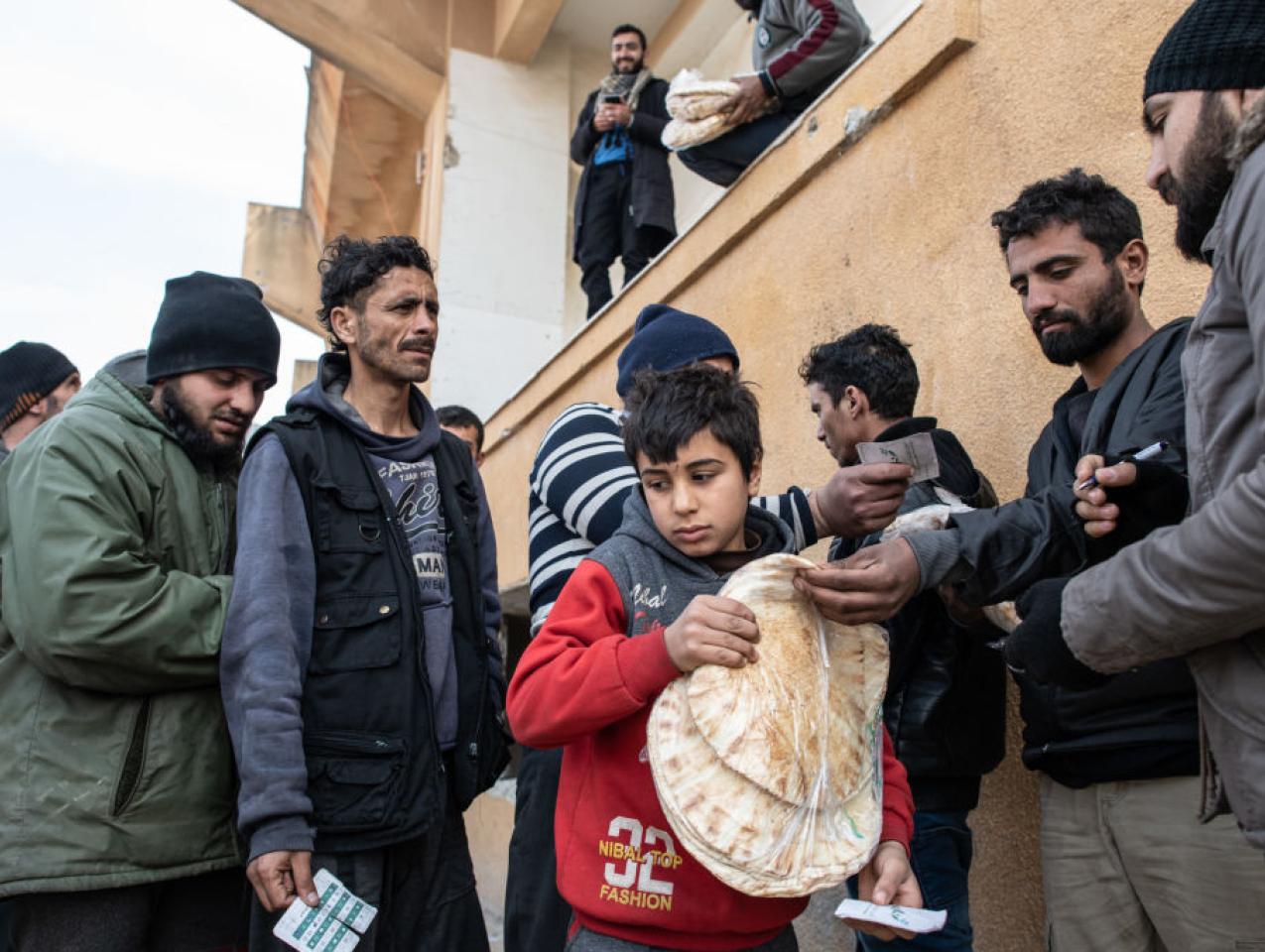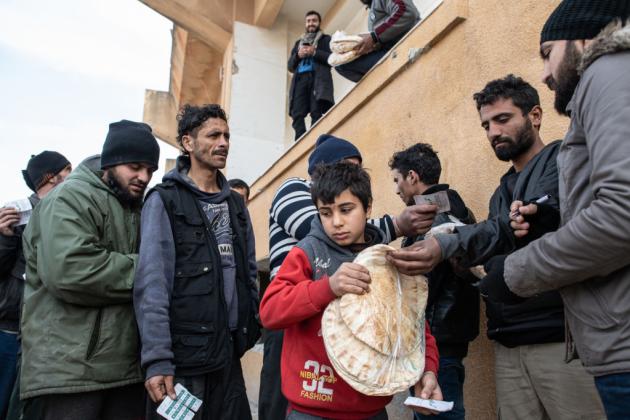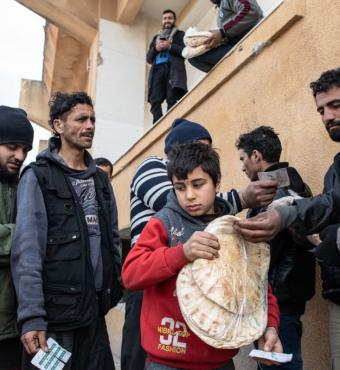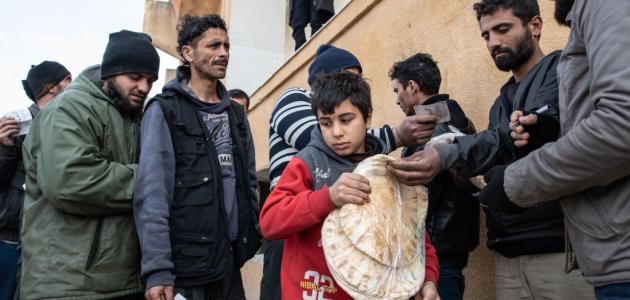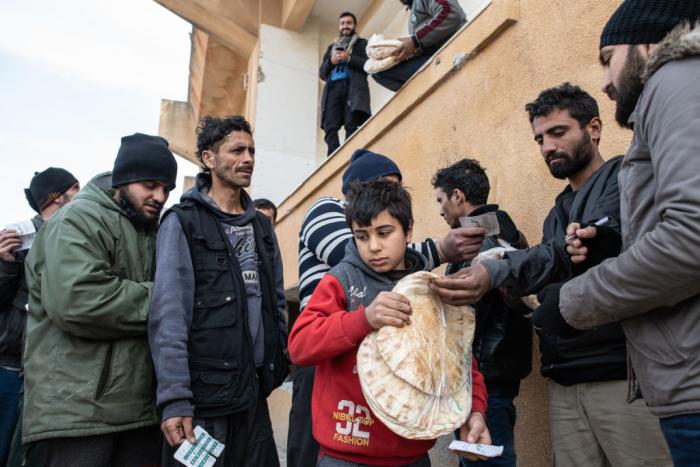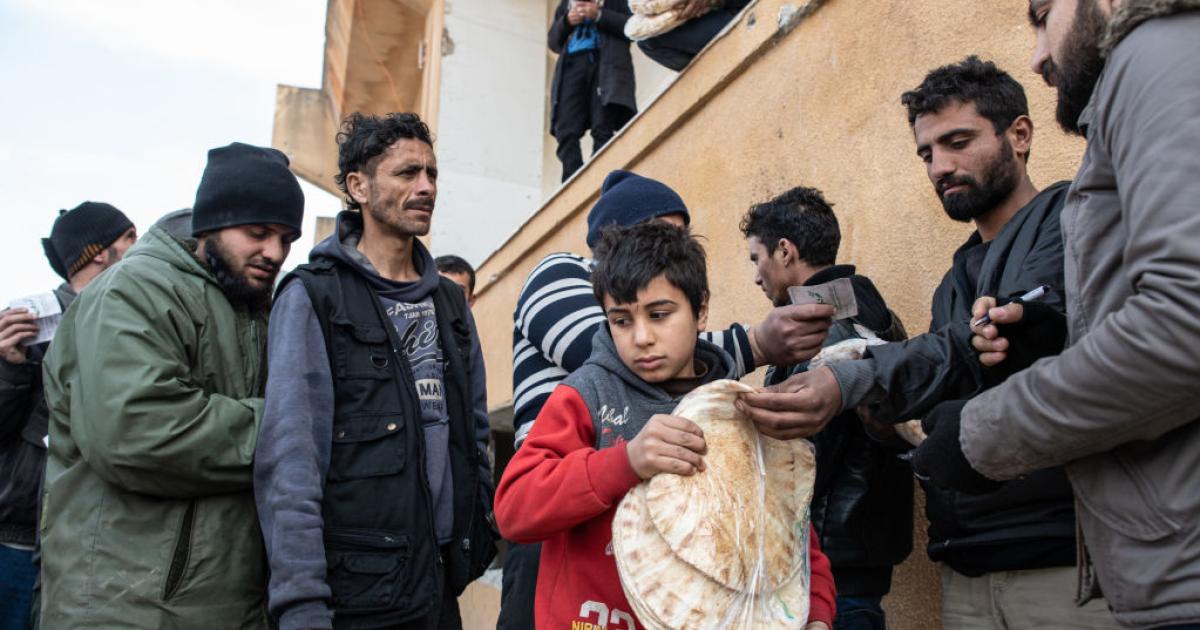Syria has disappeared from the world's newspaper headlines, but the situation inside the country grows more volatile by the day. In every quarter of Syria, daily life is becoming unsustainable. The impending collapse of Syrian society will create severe dangers for Syrians but will also produce disastrous dilemmas the United States and the international community will find very challenging to resolve.
In Assad Regime Territory
Assad's alleged constituency is living a life of poverty and hopelessness. People living in Assad regime territory today are shocked by the worsening deprivations of daily life. Damascenes struggle to obtain necessities such as electricity and fuel. In Aleppo, a city once dominated by Sunni Arabs and their culture, Aleppines suffer the same deprivations as Damascenes but now decry the overt expansion of Iranian-sponsored Shi'a institutions and a Shi'a ideology that Syrians consider alien and threatening.
In Assad’s home province of Latakia, residents receive electricity for just fifteen minutes every five hours, making basic household tasks and commerce impossible. Entire towns are virtually bereft of young men, so many of whom have become casualties in Assad’s war. This region that was supposedly Assad's stronghold is now populated by destitute and forgotten widows, orphans, and the elderly.
The Assad regime has become a mafia, extorting the population with impunity. Assad’s brother, Maher, oversees a vast empire of military checkpoints where Syrians are stopped and face demands for fines and bribes. Wealthy merchants are routinely arrested under false charges and forced to pay penalties to the office of Assad’s rapacious wife, Asma. The Syrian government routinely expropriates the property of wealthy Syrians who fled the country.
The Syrian lira once traded at about 45 to the dollar in 2010 but has collapsed to 4,500 to the dollar. Food for a month costs the average family in Assad territories $400, far beyond the reach of all but the wealthiest warlords. A university professor whose state salary is now worth only $28 a month is forced to work several other jobs—but still comes nowhere to making ends meet.
Most families depend on wire transfer remittances of $50-$200 a month from relatives who fled the country. But when these transfers arrive in Syria, Assad’s central bank confiscates about half their value by forcing Syrians to exchange the money at the regime’s official exchange rate. Any Syrian citizen caught trying to exchange foreign currency on the black market or smuggle foreign currency out of Syria can be abducted, jailed, and tortured.
American taxpayers and USAID are the largest funders of aid to the Syrian people. But all US-funded aid that flows through the United Nations into Damascus goes to contractors and sub-contractors owned by the Assad mafia. Hundreds of millions of dollars in US-funded food aid is diverted to fund Assad’s war machine, with very little actually distributed to the Syrian people. The imposed “smart card”, Assad’s food stamps, do not cover meals for one week. As a result, families have had to reduce their daily meals and are unable to purchase protein products. The situation with non-food aid is similar but more dangerous. International organizations engaging in rehabilitating infrastructures such as water networks or electrical grids in the name of "early recovery" are effectively subsidizing the Assad regime and financing the restoration of his prestige and power.
In the "Reconciled" South
In June 2018, the United States withdrew all support from the rebels of the southern front, leaving the southern provinces with no choice but to enter a Russian-brokered "reconciliation" agreement with the Assad regime. The "reconciled" southern rebels and towns were promised they could stay in place, return to normal life, and not be targeted by Assad's security apparatus. But today Daraa is constantly attacked by Assad's military, while the entire south has come under the control of the Iranian regime and Hizballah forces. The Assad regime and Hizballah now use the south to smuggle narcotics into Jordan, while the IRGC sets up military outposts to threaten Israel.
East of Daraa, the Druze city of Suwaydah is now experiencing an exponential growth in the crime rate which locals believe the Assad regime is sponsoring. Abductions for ransom and extortion by thugs have become part of daily life. Druze communities that were neutral in the fight between Assad and the opposition now denounce Assad and periodically stage massive protests against the regime's brutality and thievery.
In Northwest Syria
In Idlib and northern Aleppo, almost five million people are now crowded into an area of about 7,500 square kilometers, giving it a population density that is among the highest in the world. Millions of internally displaced persons (IDP) live in cloth tents that are cold and flooded in the winter, sweltering hot in summer, and lack sewage systems year-round. The camps are blanketed with toxic fumes from the burning of plastic used as cooking fuel. IDP children must walk long distances to reach overcrowded, makeshift school rooms that barely teach basic literacy.
Idlib, a city swollen to about ten times its prewar population, is now governed with an iron grip by Hayat Tahrir al-Sham (HTS), formerly a branch of Al Qaida. Though HTS leader Abu Muhammad al-Julani has mounted a media charm offensive to depict himself as moderate, in practice he governs like another Assad. Julani has filled his prisons not just with jihadists–such as the terrorist group Hurras Al-Deen–but also with political opponents and civil society activists who oppose his radical ideology and call for democratic reforms. Having been allowed by Turkey in 2015 to take over the vital Bab al-Hawa border crossing, HTS and its “Salvation Government” have monopolized Idlib's economy, forcing all trade in fuel, telecommunications, electricity, medicine, and food to flow through their subsidiaries. New borders have been enforced by HTS forces monitoring all commerce and prohibiting any trade with regions controlled by Turkey. Anyone caught by HTS smuggling a couple barrels of fuel from outside HTS territory may be shot on the spot.
When local authorities in the northwest agreed with Ankara to use the Turkish lira in the local economy, Idlib residents initially welcomed the move. But Idlibis and others in the northwestern territories now suffer runaway inflation and economic shock due to the recent collapse of the Turkish currency and the general weakening of the Turkish economy. Salaries for those few Idlibis lucky enough to be employed have collapsed. The average worker earns too little to provide for a family for more than ten days a month. Teachers in northwest Syria earn $47 monthly, civil servants $200, police $67, and military police $29. The monthly supply of cooking gas costs $12; bread costs almost $2 daily, and fuel has tripled to $5.25 per gallon. University graduates with connections may find jobs with the international NGOs that operate in the north, but everyone else is helpless.
The situation in the northwest is doubly tragic because its residents are mostly exiled, displaced, and terrorized families who have already had to flee the horrific killings of Assad and allied Russian forces only to deal with the oppressive thumb of Julani. And When Turkey’s Foreign Minister and President recently hinted that Ankara might discuss “reconciliation” with the Assad regime, massive and spontaneous protests erupted. Less than a week later, a renewed flow of refugees also began leaving Syria and Turkey, with many families signing over their homes to smugglers in exchange for the cost of passage to Europe and beyond—perhaps even to the U.S. southern border.
One horrible measure of this bleak situation for those who cannot flee is the enormous increase in suicides. Local civic organizations reported more than 25 suicides in the first half of 2022. Local news outlets now report new suicides at least twice a week. When surveyed, the family members of suicide cases said the reasons involved constant anxiety, fear of Russian airstrikes, and the dread of having to flee again.
In Eastern Syria
The war that ISIS waged to install its caliphate and the subsequent international campaign to destroy it left the cities and towns of the Euphrates River valley in ruins. Across the northeast, the remnants and sleeper cells of ISIS use the harsh living conditions in that region as a recruiting tool, luring desperate northeasterners into ISIS ranks or employment. Thousands of ISIS fighters and families are still in detention centers run by the Kurdish Popular Defense Units (YPG), making the situation a ticking time bomb. Continual Turkish threats to invade the northeast to expel the YPG leaves locals in constant uncertainty and fear. The Arab communities resent the Kurdish-led YPG’s heavy-handed security raids and conscription of the local youth, which they believe are driven by Kurdish discrimination against them. Arab locals fear the prospect of a U.S. withdrawal from the northeast, which in their view would leave them at the mercy of the YPG on one side and Assad and Iran on the other.
Syrians throughout the Euphrates region struggle to feed their families. Local oil production enables the YPG to pay meager salaries to the tens of thousands of troops and civil servants of its so-called autonomous administration. The ongoing war between Turkey and the Kurdistan Workers' Party (PKK, viewed as a terrorist organization by Turkey and the United States) means that the economy of the northeast is virtually cut off from the economies of Turkey and Iraqi Kurdistan. As a result, the northeasterners have to use the collapsing Syrian lira and have few alternatives to trading with Assad regime cronies. The economy of the northeast could not survive the withdrawal of the hundreds of millions of dollars in stabilization projects from the United States and its allies.
Finally, far to the southeast, in the hellish of the Rukban IDP camp, thousands of Syrians are stranded in the desert with little water, medical care, food, or security. Having fled in desperation to escape the Assad regime's killings, these Syrians are now stuck in a zone surrounded by Assad's army and militias, which deny entry to U.N. aid convoys and anyone who would deliver necessities to the starving population. Rukban is just meters from the Jordanian border, but Jordan callously blocks any cross-border aid to the camp. Jordanian officials, led by King Abdullah himself, make no secret of their preference that the starving, thirsty IDPs surrender to the regime and leave the border zone, regardless of whatever the Assad regime might do to these people. Most cruelly, though, the starving IDPs of Rukban receive almost no help from the American superpower, even though the U.S. military has an outpost less than 10 miles away at Tanf. Simply put, America has left more than 10,000 Syrians to either starve to death or surrender and die at Assad's hands, though it is entirely within America's power to save them–a fact not lost on Syrians in Rukban and everywhere beyond.
Conclusion
Looking into Syria’s foreordained future, it’s difficult to predict anything but instability bound to spread beyond the country’s borders. People will leave, in massive numbers making the 2015 refugee wave to Europe be trivial. They will attempt the most dangerous exits, even across high seas, because they prefer to risk death while trying to escape Syria than waiting for death by starvation or by torture at Assad’s hands.
For those who remain in Assad territories, narcotrafficking is rapidly becoming the only viable occupation. As happened in Colombia, vast swaths of Syrian society will begin reorganizing into support networks for the Captagon cartel. This narcotrafficking machinery will spill over into all of Syria’s neighbors and eventually around the globe, as did Afghanistan’s opium. Meanwhile, extremists like Al Qaeda, ISIS, and Hizballah will have a much easier time recruiting from among the desperate population. And if the Iranian regime receives an infusion of cash through a renewed JCPOA, they will be certain to use some of their windfall to expand their colonization of Syria–deepening the threat of war to all of Syria’s neighbors. It is only a matter of time before these dangers--and the other unforeseen problems that will accompany them--will force the world to wake up to Syria once again. Whatever the world decides to do in the meantime, one thing is sure: Syria is not calm, and Syria will not sit still.
Rania Kisar is Deputy Director of the American Center for Levant Studies and also a research fellow at the Hudson Institute. She is the founder and director of the SHINE Institute for Strategic Empowerment, a Syria-based NGO dedicated to educating Syrian civil society.







